|
VILLAGE OF MORRIS Department of Public Works 39 Grove Street, Morris, New York 13808 Shop 607-263-5556 Fax 607-263-2145 Annual Drinking Water Quality Report for 2023 Village of Morris P.O. Box 448 Morris, NY 13808 Public Water Supply NYID# NY3800153 INTRODUCTION To comply with State regulations, the Village of Morris, will be annually issuing a report describing the quality of your drinking water. The purpose of this report is to raise your understanding of drinking water and awareness of the need to protect our drinking water sources. Last year, your tap water met all State drinking water health standards. We are proud to report that our system did not violate a maximum contaminant level or any other water quality standard. This report provides an overview of last year’s water quality. Included are details about where your water comes from, what it contains, and how it compares to State standards. If you have any questions about this report or concerning your drinking water, please contact Jared Pedersen, Superintendent at (607) 263-5556. We want you to be informed about your drinking water. If you want to learn more, please attend any of our regularly scheduled village board. The meetings are held on the first Thursday of each month at 6:30pm at the Morris Townhouse located at 118 Main Street Morris, NY 13808. WHERE DOES OUR WATER COME FROM? In general, the sources of drinking water (both tap water and bottled water) include rivers, lakes, streams, ponds, reservoirs, springs, and wells. As water travels over the surface of the land or through the ground, it dissolves naturally occurring minerals and, in some cases, radioactive material, and can pick up substances resulting from the presence of animals or from human activities. Contaminants that may be present in source water include: microbial contaminants; inorganic contaminants; pesticides and herbicides; organic chemical contaminants; and radioactive contaminants. In order to ensure that tap water is safe to drink, the State and the EPA prescribe regulations which limit the amount of certain contaminants in water provided by public water systems. The State Health Department’s and the FDA’s regulations establish limits for contaminants in bottled water which must provide the same protection for public health. Our water system serves 642 people across 249 service connections. Our water source is a spring located at the end of Meadow Lane. Water is pumped from the spring to a storage tank above the village. When the tank is full, the pump shuts off and the water is gravity fed into the distribution system. The water is treated with chlorine for disinfection and also a phosphate blend compound as a corrosion inhibitor prior to distribution. Our water operator is NYS certified and attends ongoing educational classes. The NYS DOH has completed a source water assessment for this system, based on available information. Possible and actual threats to the drinking water sources were evaluated. The state source water assessment includes a susceptibility rating based on the risk posed by each potential source of contamination and how easily contaminants can move through the subsurface to the wells. The susceptibility rating is an estimate of the potential for contamination of the source water, it does not mean that the water delivered to consumers is, or will become contaminated. While nitrates (and other inorganic contaminants) were detected in our water, it should be noted that all drinking water, including bottled drinking water, may be reasonably expected to contain at least small amounts of some contaminants from natural sources. The presence of contaminants does not necessarily indicate that the water poses a health risk. The nitrate levels in our sources are not considered high in comparison with other sources in this area. See section “Are there contaminants in our drinking water?” for a list of the contaminants that have been detected. As mentioned before, our water is derived from a spring. The source water assessment has rated the spring as having a high susceptibility to microbials and nitrates. These ratings are due primarily to the close proximity of permitted discharge facilities (industrial/commercial facilities that discharge waste water into the environment and are regulated by the state and/or federal government) and pasture within the assessment area. In addition, the spring draws from an unconfined aquifer of unknown hydraulic conductivity. While the source water assessment rates our spring as being susceptible to microbials, please note that our water is disinfected to ensure that the finished water delivered into your home meets New York State’s drinking water standards for microbial contamination. A copy of the assessment, including a map of the assessment area, can be obtained by contacting Jared Pedersen, at (607) 263- 5556, or visit the Village Barn located at 39 Grove Street Morris, NY. Future plans We intend to maintain the quality of water and the integrity of our water system and with our meter reading equipment keep close track of where our water is used. This will help us discover leaks inside residences. Ground Water Under the Direct Influence of Surface Water Study The New York State Department of Health, after reviewing data collected for a year, has determined that there is no evidence of surface water intrusion into the spring. “Therefore, the Spring is not considered GWUDI and no additional action is required at this time.” ARE THERE CONTAMINANTS IN OUR DRINKING WATER? As the State regulations require, we routinely test your drinking water for numerous contaminants. These contaminants include: total coliform, turbidity, inorganic compounds, nitrate, nitrite, lead and copper, volatile organic compounds, total trihalomethanes, haloacetic acids, radiological and synthetic organic compounds. The table presented below depicts which compounds were detected in your drinking water. The State allows us to test for some contaminants less than once per year because the concentrations of these contaminants do not change frequently. Some of our data, though representative, are more than one year old. It should be noted that all drinking water, including bottled drinking water, may be reasonably expected to contain at least small amounts of some contaminants. The presence of contaminants does not necessarily indicate that water poses a health risk. More information about contaminants and potential health effects can be obtained by calling the EPA’s Safe Drinking Water Hotline (800-426-4791) or the New York State Health Department – Oneonta District Office at (607) 432-3911. VILLAGE OF MORRIS Department of Public Works 39 Grove Street, Morris, New York 13808 Shop 607-263-5556 Fax 607-263-2145 Footnotes:
* The level presented represents the 90th percentile of the 10 sites tested. A percentile is a value on a scale of 100 that indicates the percent of a distribution that is equal to or below it. The 90th percentile is equal to or greater than 90% of the lead or copper values detected at your water system. In this case, 10 samples were collected at your water system and the 90th percentile values were the second highest value sample result (1.1 UG/L for lead and 1.0 MG/L for copper). The action levels neither lead nor copper were exceeded at any of the sampling locations. Definitions: Maximum Contaminant Level (MCL): The highest level of a contaminant that is allowed in drinking water. MCLs are set as close to the MCLGs as feasible. Maximum Contaminant Level Goal (MCLG): The level of a contaminant in drinking water below which there is no known or expected risk to health. MCLGs allow for a margin of safety. Maximum Residual Disinfectant Level (MRDL): The highest level of a disinfectant allowed in drinking water. There is convincing evidence that addition of a disinfectant is necessary for control of microbial contaminants. Maximum Residual Disinfectant Level Goal (MRDLG): The level of a drinking water disinfectant below which there is no known or expected risk to health. MRDLGs do not reflect the benefits of the use of disinfectants to control microbial contamination. Action Level (AL): The concentration of a contaminant which, if exceeded, triggers treatment or other requirements which a water system must follow. Treatment Technique (TT): A required process intended to reduce the level of a contaminant in drinking water. Level 1 Assessment: A Level 1 assessment is an evaluation of the water system to identify potential problems and determine, if possible, why total coliform bacteria have been found in our water system. Level 2 Assessment: A Level 2 assessment is an evaluation of the water system to identify potential problems and determine, if possible, why an E. coli MCL violation has occurred and/or why total coliform bacteria have been found in our water system on multiple occasions. Non-Detects (ND): Laboratory analysis indicates that the constituent is not present. Nephelometric Turbidity Unit (NTU): A measure of the clarity of water. Turbidity in excess of 5 NTU is just noticeable to the average person. Milligrams per liter (mg/l): Corresponds to one part of liquid in one million parts of liquid (parts per million - ppm). Micrograms per liter (ug/l): Corresponds to one part of liquid in one billion parts of liquid (parts per billion - ppb). Nanograms per liter (ng/l): Corresponds to one part of liquid to one trillion parts of liquid (parts per trillion - ppt). Picograms per liter (pg/l): Corresponds to one part per of liquid to one quadrillion parts of liquid (parts per quadrillion – ppq). Picocuries per liter (pCi/L): A measure of the radioactivity in water. Millirems per year (mrem/yr): A measure of radiation absorbed by the body. Million Fibers per Liter (MFL): A measure of the presence of asbestos fibers that are longer than 10 micrometers. WHAT DOES THIS INFORMATION MEAN? As you can see by the table, our system had no violations. We have learned through our testing that some contaminants have been detected; however, these contaminants were detected below New York State requirements. We are required to present the following information on lead in drinking water: Lead can cause serious health problems, especially for pregnant women and young children. Lead in drinking water is primarily from materials and components associated with service lines and home plumbing. The Village of Morris is responsible for providing high quality drinking water and removing lead pipes, but cannot control the variety of materials used in plumbing components in your home. You share the responsibility for protecting yourself and your family from the lead in your home plumbing. You can take responsibility by identifying and removing lead materials within your home plumbing and taking steps to reduce your family’s risk. Before drinking tap water, flush your pipes for several minutes by running your tap, taking a shower, doing laundry or a load of dishes. You can also use a filter certified by an American National Standards Institute accredited certifier to reduce lead in drinking water. If you are concerned about lead in your water and wish to have your water tested, contact Jared Pedersen at (607) 263-5556. Information on lead in drinking water, testing methods, and steps you can take to minimize exposure is available at http://www.epa.gov/safewater/lead. IS OUR WATER SYSTEM MEETING OTHER RULES THAT GOVERN OPERATIONS? During 2023, our system was in compliance with applicable State drinking water operating, monitoring and reporting requirements. DO I NEED TO TAKE SPECIAL PRECAUTIONS? Although our drinking water met or exceeded state and federal regulations, some people may be more vulnerable to disease causing microorganisms or pathogens in drinking water than the general population. Immuno-compromised persons such as persons with cancer undergoing chemotherapy, persons who have undergone organ transplants, people with HIV/AIDS or other immune system disorders, some elderly, and infants can be particularly at risk from infections. These people should seek advice from their health care provider about their drinking water. EPA/CDC guidelines on appropriate means to lessen the risk of infection by Cryptosporidium, Giardia and other microbial pathogens are available from the Safe Drinking Water Hotline (800-426-4791). INFORMATION FOR NON-ENGLISH SPEAKING RESIDENTS Spanish Este informe contiene información muy importante sobre su agua beber. Tradúzcalo ó hable con alguien que lo entienda bien. French Ce rapport contient des informations importantes sur votre eau potable. Traduisez-le ou parlez en avec quelqu’un qui le comprend bien. WHY SAVE WATER AND HOW TO AVOID WASTING IT? Although our system has an adequate amount of water to meet present and future demands, there are a number of reasons why it is important to conserve water:
You can play a role in conserving water by becoming conscious of the amount of water your household is using, and by looking for ways to use less whenever you can. It is not hard to conserve water. Conservation tips include:
CLOSING Thank you for allowing us to continue to provide your family with quality drinking water this year. In order to maintain a safe and dependable water supply we sometimes need to make improvements that will benefit all of our customers. The costs of these improvements may be reflected in the rate structure. Rate adjustments may be necessary in order to address these improvements. We ask that all our customers help us protect our water sources, which are the heart of our community. Please call our office if you have questions. VILLAGE OF MORRIS Department of Public Works 39 Grove Street, Morris, New York 13808 Shop 607-263-5556 Fax 607-263-2145 Annual Drinking Water Quality Report for 2022 System Name: Village of Morris System Address: P.O. Box 448 Morris, NY 13808 Public Water Supply ID# NY 38000153 INTRODUCTION To comply with State regulations, The Village of Morris, will be annually issuing a report describing the quality of your drinking water. The purpose of this report is to raise your understanding of drinking water and awareness of the need to protect our drinking water sources. Last year, your tap water met all State drinking water health standards. We are proud to report that our system did not violate a maximum contaminant level or any other water quality standard. This report provides an overview of last year’s water quality. Included are details about where your water comes from, what it contains, and how it compares to State standards. If you have any questions about this report or concerning your drinking water, please contact Jared Pedersen, machine operator, (607) 353-2194. We want you to be informed about your drinking water. If you want to learn more, please attend any of our regularly scheduled village board meetings on the second Monday of each month. The meetings are held 118 Main Street Morris, NY 13808 at 7:00 p.m. WHERE DOES OUR WATER COME FROM? In general, the sources of drinking water (both tap water and bottled water) include rivers, lakes, streams, ponds, reservoirs, springs, and wells. As water travels over the surface of the land or through the ground, it dissolves naturally occurring minerals and, in some cases, radioactive material, and can pick up substances resulting from the presence of animals or from human activities. Contaminants that may be present in source water include: microbial contaminants; inorganic contaminants; pesticides and herbicides; organic chemical contaminants; and radioactive contaminants. In order to ensure that tap water is safe to drink, the State and the EPA prescribe regulations which limit the amount of certain contaminants in water provided by public water systems. The State Health Department’s and the FDA’s regulations establish limits for contaminants in bottled water which must provide the same protection for public health. Our water system serves 642 residents over 248 service connections. Our water source is a spring located at the end of Meadow Lane. Water is pumped from the spring throughout the water system as well to our water storage tank. When the tank is full, the pump shuts off and the water is gravity fed back from the tank into the distribution system. The water is treated with chlorine for disinfection and also a phosphate blend compound as a corrosion inhibitor prior to distribution. Our water operator is NYS certified and attends ongoing educational classes. The NYS DOH has completed a source water assessment for this system, based on available information. Possible and actual threats to the drinking water sources were evaluated. The state source water assessment includes a susceptibility rating based on the risk posed by each potential source of contamination and how easily contaminants can move through the subsurface to the wells. The susceptibility rating is an estimate of the potential for contamination of the source water, it does not mean that the water delivered to consumers is, or will become contaminated. While nitrates (and other inorganic contaminants) were detected in our water, it should be noted that all drinking water, including bottled drinking water, may be reasonably expected to contain at least small amounts of some contaminants from natural sources. The presence of contaminants does not necessarily indicate that the water poses a health risk. The nitrate levels in our sources are not considered high in comparison with other sources in this area. See section “Are there contaminants in our drinking water?” for a list of the contaminants that have been detected. As mentioned before, our water is derived from a spring. The source water assessment has rated the spring as having a high susceptibility to microbials and nitrates. These ratings are due primarily to the close proximity of permitted discharge facilities (industrial/commercial facilities that discharge waste water into the environment and are regulated by the state and/or federal government) and pasture within the assessment area. In addition, the spring draws from an unconfined aquifer of unknown hydraulic conductivity. While the source water assessment rates our spring as being susceptible to microbials, please note that our water is disinfected to ensure that the finished water delivered into your home meets New York State’s drinking water standards for microbial contamination. A copy of the assessment, including a map of the assessment area, can be obtained by contacting Jared Pedersen, Machine Operator at (607) 263- 5556, or stop at the Village Barn located at 39 Grove Street Morris, NY. Future plans We intend to maintain the quality of water and the integrity of our water system and with our meter reading equipment keep close track of where our water is used. This will help us discover leaks inside residences. Ground Water Under the Direct Influence of Surface Water Study The New York State Department of Health, after reviewing data collected for a year, has determined that there is no evidence of surface water intrusion into the spring. “Therefore, the Spring is not considered GWUDI and no additional action is required at this time.” ARE THERE CONTAMINANTS IN OUR DRINKING WATER? As the State regulations require, we routinely test your drinking water for numerous contaminants. These contaminants include: microbial contaminants, inorganic contaminants, pesticides, herbicides, radioactive contaminants and organic chemical contaminants. Microbial contaminants, such as viruses and bacteria, may come from sewage treatment plants, septic systems, agricultural livestock operations, and wildlife. Inorganic contaminants, such as salts and metals, can be naturally – occurring or result from urban storm water runoff, industrial or domestic waste water discharges, oil and gas production, mining or farming. Pesticides and herbicides may come from a variety of sources, such as agricultural and residential uses. Radioactive contaminants are usually naturally occurring. Organic chemical contaminants, including synthetic and volatile organic chemicals, are byproducts of industrial processes and petroleum production and can also come from gas stations, urban water runoff and septic systems. The table presented below depicts which compounds were detected in your drinking water. The State allows us to test for some contaminants less than once per year because the concentrations of these contaminants do not change frequently. Some of our data, though representative, are more than one year old. It should be noted that all drinking water, including bottled drinking water, may be reasonably expected to contain at least small amounts of some contaminants. The presence of contaminants does not necessarily indicate that water poses a health risk. More information about contaminants and potential health effects can be obtained by calling the EPA’s Safe Drinking Water Hotline (800-426-4791) or the New York State Health Department at (607) 432 - 3911 As the State regulations require, we routinely test your drinking water for numerous contaminants. These contaminants include: total coliform, inorganic compounds, nitrate, lead and copper, volatile organic compounds, total trihalomethanes, and synthetic organic compounds. * During 2022 we collected and analyzed 10 samples for lead and copper. The level included in the table represents the 90th percentile of the 10 samples collected. A percentile is a value on a scale of 100 that indicates the percent of a distribution that is equal to or below it. The 90th percentile is equal to or greater than 90% of the values detected at your water system. The action level for lead and copper were not exceeded at any of the 10 sites tested. Definitions:
Maximum Contaminant Level (MCL): The highest level of a contaminant that is allowed in drinking water. MCLs are set as close to the MCLGs as feasible. Maximum Contaminant Level Goal (MCLG): The level of a contaminant in drinking water below which there is no known or expected risk to health. MCLGs allow for a margin of safety. Maximum Residual Disinfectant Level (MRDL): The highest level of a disinfectant allowed in drinking water. There is convincing evidence that addition of a disinfectant is necessary for control of microbial contaminants. Maximum Residual Disinfectant Level Goal (MRDLG): The level of a drinking water disinfectant below which there is no known or expected risk to health. MRDLGs do not reflect the benefits of the use of disinfectants to control microbial contamination. Action Level (AL): The concentration of a contaminant which, if exceeded, triggers treatment or other requirements which a water system must follow. Treatment Technique (TT): A required process intended to reduce the level of a contaminant in drinking water. Level 1 Assessment: A Level 1 assessment is an evaluation of the water system to identify potential problems and determine, if possible, why total coliform bacteria have been found in our water system. Level 2 Assessment: A Level 2 assessment is an evaluation of the water system to identify potential problems and determine, if possible, why an E. coli MCL violation has occurred and/or why total coliform bacteria have been found in our water system on multiple occasions. Non-Detects (ND): Laboratory analysis indicates that the constituent is not present. Nephelometric Turbidity Unit (NTU): A measure of the clarity of water. Turbidity in excess of 5 NTU is just noticeable to the average person. Milligrams per liter (mg/l): Corresponds to one part of liquid in one million parts of liquid (parts per million - ppm). Micrograms per liter (ug/l): Corresponds to one part of liquid in one billion parts of liquid (parts per billion - ppb). Nanograms per liter (ng/l): Corresponds to one part of liquid to one trillion parts of liquid (parts per trillion - ppt). Picograms per liter (pg/l): Corresponds to one part per of liquid to one quadrillion parts of liquid (parts per quadrillion – ppq). Picocuries per liter (pCi/L): A measure of the radioactivity in water. Millirems per year (mrem/yr): A measure of radiation absorbed by the body. Million Fibers per Liter (MFL): A measure of the presence of asbestos fibers that are longer than 10 micrometers. WHAT DOES THIS INFORMATION MEAN? As you can see by the table, our system had no violations. We have learned through our testing that some contaminants have been detected; however, these contaminants were detected below the level allowed by the State. Lead can cause serious health problems, especially for pregnant women and young children. Lead in drinking water is primarily from materials and components associated with service lines and home plumbing. [Water Supply Name] is responsible for providing high quality drinking water and removing lead pipes, but cannot control the variety of materials used in plumbing components in your home. You share the responsibility for protecting yourself and your family from the lead in your home plumbing. You can take responsibility by identifying and removing lead materials within your home plumbing and taking steps to reduce your family’s risk. Before drinking tap water, flush your pipes for several minutes by running your tap, taking a shower, doing laundry or a load of dishes. You can also use a filter certified by an American National Standards Institute accredited certifier to reduce lead in drinking water. If you are concerned about lead in your water and wish to have your water tested, contact The Village of Morris, (607) 263-5556 or (607) 263-5400. Information on lead in drinking water, testing methods, and steps you can take to minimize exposure is available at http://www.epa.gov/safewater/lead. IS OUR WATER SYSTEM MEETING OTHER RULES THAT GOVERN OPERATIONS? During 2022, our system was in compliance with applicable State drinking water operating, monitoring and reporting requirements. DO I NEED TO TAKE SPECIAL PRECAUTIONS? Although our drinking water met or exceeded state and federal regulations, some people may be more vulnerable to disease causing microorganisms or pathogens in drinking water than the general population. Immuno-compromised persons such as persons with cancer undergoing chemotherapy, persons who have undergone organ transplants, people with HIV/AIDS or other immune system disorders, some elderly, and infants can be particularly at risk from infections. These people should seek advice from their health care provider about their drinking water. EPA/CDC guidelines on appropriate means to lessen the risk of infection by Cryptosporidium, Giardia and other microbial pathogens are available from the Safe Drinking Water Hotline (800-426-4791). WHY SAVE WATER AND HOW TO AVOID WASTING IT? Although our system has an adequate amount of water to meet present and future demands, there are a number of reasons why it is important to conserve water:
You can play a role in conserving water by becoming conscious of the amount of water your household is using, and by looking for ways to use less whenever you can. It is not hard to conserve water. Conservation tips include:
CLOSING Thank you for allowing us to continue to provide your family with quality drinking water this year. In order to maintain a safe and dependable water supply we sometimes need to make improvements that will benefit all of our customers. The costs of these improvements may be reflected in the rate structure. Rate adjustments may be necessary in order to address these improvements. We ask that all our customers help us protect our water sources, which are the heart of our community. Please call our office at (607) 263- 5556 if you have questions. Trash and Recyclables
Recyclables are picked up each Wednesday morning and should be placed in containers with lids, not bagged. Cardboard and newspaper must be kept dry. No broken glass, pizza boxes Styrofoam, or plastic bags are recycled. Rinse containers before recycling them. Place your recyclables curbside no later than 7am.
If a holiday interferes with recyclable or trash pickup, you will be notified of an alternate day through our phone messaging system. Furniture Cleanup days Furniture day. Dates are determined by the TOWN of MORRIS. Usually in May & September, a reminder will be sent out through our phone messaging system. Debris Removal Removal of brush, lawn and garden debris is ongoing. Lawn and garden debris should be place in a container or biodegradable bag. Lawn and garden debris containers should be limited to 40 lbs as we must lift them onto a truck. Place materials curbside and take care not to inhibit traffic. If you have a large amount of brush to dispose of please call to schedule removal. (607) 263-5556 Removal of Metal Goods We are able to dispose of metal goods such as water heaters, washing machines, stoves, etc., but WE DO NOT remove refrigerators, freezers, air conditioners, or other appliances containing freon. Furniture should be reserved for Furniture Cleanup day. For more information or questions please call 607-263-5556 LANDLORDS: Please share this flyer with your Tenants. VILLAGE OF MORRIS P.O. BOX 448 MORRIS, NY 13808 (607) 263-5400 OR (607) 263-5556 2021 WATER QUALITY REPORT PWS ID #38000153 We're pleased to present to you this year's Annual Water Quality Report. This report is designed to inform you about the quality water and services we deliver to you every day. Our constant goal is to provide you with a safe and dependable supply of drinking water. We want you to understand d1e efforts we make to continually improve the water treatment process and protect our water resources. We are committed to ensuring the quality of your water. Why am I receiving this report? Congress passed the Safe Drinking Water Act in 1974 and gave the U.S. Environmental Protection Agency (EPA) the job of making rules, National Primary Drinking Water Regulations (NPDWR), to ensure safe drinking water in the US. In 1996, Congress passed amendments that require drinking water systems to give consumers important information about their water, including where it comes from, and how your water quality compares wilh federal standards. The Village of Morris services a population of 642 people from our Water Department located at 39 Grove Street. This report covers the period January 1, 2021 to December 31, 2021. If you have any questions about this report or concerning your water utility, please contact Christopher Robinson at (607) 263-5556 or the local Department of Health Office at (607) 432-3911. We want our valued customers to be infom1ed about their water utility. lfyou want to learn more, please attend any of our regularly scheduled meetings. They are held on the second Monday of every month at 7:00 pm in the Townhouse. The sources of drinking water include rivers, lakes, streams, ponds, reservoirs, springs, and wells. As water travels over the surface of the land or through the ground, it dissolves naturally occurring minerals and radioactive material and can pick up substances resulting from human or animal activity. Where does our water come from? Our water source is a spring located at the end of Meadow Lane. From the spring, water is pumped throughout ilie water system as well as to our new water storage tank. When the tank is full the pump shuts off and ilie water is gravity fed back from the tank into ilie distribution system. Our water is treated with Cblorine for disinfectant and a phosphate blend as a corrosion inhibitor. Our water operators are NYS Certified and they attend ongoing educational classes. This report shows our water quality and what it means. Contaminants that may be present in raw or source water before it is treated are: microbial contaminants, inorganic contaminants, pesticides and herbicides, radioactive contaminants, and organic chemical contaminants. Microbial contaminants, such as viruses and bacteria, may come from sewage treatment plants, septic systems, agricultural livestock operations, and wildlife. Inorganic contaminants, such as salts and metals, can be naturally occurring or result from urban storm water runoff, industrial or domestic waste water discharges, oil and gas production, and mining or farming. Pesticides and herbicides may come from a variety of sources; such as agricultural and residential uses. Radioactive contaminants are usually naturally occurring. Organic chemical contaminants, including synilietic and volatile organic chemicals, are byproducts of industrial processes and petroleum production and can also come from gas stations, urban water runoff and septic systems. The Village of Morris routinely monitors for contaminants in your drinking water according to Federal and State laws. This table shows the results of our most recent monitoring. All drinking water, including bottled water, may be reasonably expected to contain at least small amounts of some contaminants. It is important to remember iliat the presence of these contaminants does not necessarily pose a healili risk. In this table you will find many terms and abbreviations you might not be familiar with. To help you better understand these terms we've provided definitions following ilie table and advice about drinking water from their health care providers. EPA/CDC guidelines on appropriate means to lessen ilie risk of infection by cryptosporidium and other microbiological contaminants are available from the Safe Drinking Water Hotline (800-426-4791) Definitions:
Maximum Contaminant Level (MCL): The highest level of a contaminant that is allowed in drinking Nater. MCLs are set as close to the MCLGs as feasible. Maximum Contaminant Level Goal (MCLG): The level of a contaminant in drinking water below which there is no known or expected risk to health. MCLGs allow for a margin of safety. Action Level (AL): The concentration of a contaminant which, if exceeded, triggers treatment or other requirements which a water system must follow. Milligrams per liter (mg/I): Corresponds to one part of liquid in one million parts of liquid (parts per nillion - ppm). Micrograms per liter (ug/I): Corresponds to one part of liquid in one billion parts of liquid (parts per billion- ppb). Micocuries per liter (pCi/L): A measure of the radioactivity in water. Maximum Residual Disinfectant Level (MRDL). An MRDL is "a level of a disinfectant added for water treatment that may not Je exceeded at the consumer's tap without an unacceptable possibility of adverse health effects Maximum Residual Disinfectant Level Goal (MRDLG)The level of a drinking water disinfectant below which there is no mown or expected risk to health. MRDLGs do not reflect the benefits of the use of disinfectants to control microbial ontaminants. Treatment Technique (TT) A required process intended to reduce the level of a contaminant in drinking water. Mathematical Conversions '1mgl/I = 1 ppm '1ug/I = 1ppb ·1ppm X 1000 = 1ppb The amounts of a contaminant allowed in drinking water are so small they are measured in ppm * quivalent to one penny in $10,000: or ppb - equivalent to one penny in $10,000,000. Along with the previously mentioned our water has also been tested for 140 other substances that were undetectable. Drinking water, including bottled water, may reasonably be expected to contain at least small amounts of some contaminants. The presence of contaminants does not necessarily indicate that the water poses a health risk. More information about contaminants and potential health effects can be obtained by calling the Environmental Protection Agency's Safe Drinking Water Hotline at 1-800-426-4791. Some people may be more vulnerable to contaminants in drinking water than the general population. lmmuno-compromised person such as persons with cancer undergoing chemotherapy, persons who have undergone organ transplants, people with HIV/AIDS or other immune system disorders, some elderly, and infants can be particularly at risk from infections. These people should seek advice about drinking water from their health care providers. EPA/CDC guidelines on appropriate means to lessen the risk of infection by cryptosporidium and other microbiological contaminants are available from the Safe Drinking Water Hotline (800-426-4791) What does this mean? Some customers have an elevated copper level in their water. To combat this situation the Village is injecting a phosphate blend compound. This compound coats the inside of the pipes preventing lead and copper from entering the water. Copper is an essential nutrient, but some people who drink water containing copper in excess of the action level over a relatively short amount of time could experience gastrointestinal distress. Some people who drink water containing copper in excess of the action level over many years could suffer liver or kidney damage. People with Wilson's Disease should consult their personal doctor. We at the Village of Morris work around the clock to provide top quality water to every tap. We ask that all our customers help us protect our water sources, which are the heart of our community, our way of life and our children's future. Please call our office if you have questions. Christopher Robinson at (607) 263-5556 Landlords and owners of multiple family dwellings should contact the Village for additional copies of this report for your tenants. Village Office (607) 263 - 5400 or Village Barn (607) 263 - 5556 Morris Village Water System - Public Water System Number: NY3800153 Source Water Assessment Summary The NYS DOH has completed a source water assessment for this system, based on available information. Possible and actual threats to the drinking water sources were evaluated. The state source water assessment includes a susceptibility rating based on the risk posed by each potential source of contamination and how easily contaminants can move through the subsurface to the wells. The susceptibility rating is an estimate of the potential for contamination of the source water, it does not mean that the water delivered to consumers is, or will become contaminated. While nitrates (and other inorganic contaminants) were detected in our water, it should be noted that all drinking water, including bottled drinking water, may be reasonably expected to contain at least small amounts of some contaminants from natural sources. The presence of contaminants does not necessarily indicate that the water poses a health risk. The nitrate levels in our sources are not considered high in comparison with other sources in this area. See section *Are there contaminants in our drinking water?* for a list of the contaminants that have been detected. As mentioned before, our water is derived from a spring. The source water assessment has rated the spring as having a high susceptibility to microbials and nitrates. These ratings are due primarily to the close proximity of permitted discharge facilities (industrial/commercial facilities that discharge waste water into the environment and are regulated by the state and/or federal government) and pasture within the assessment area. In addition, the spring draws from an unconfined aquifer of unknown hydraulic conductivity. While the source water assessment rates our spring as being susceptible to microbials, please note that our water is disinfected to ensure that the finished water delivered into your home meets New York State*s drinking water standards for microbial contamination. A copy of the assessment, including a map of the assessment area, can be obtained by contacting Christopher Robinson, Superintendent at 607-263-5556 or stop at the Village Barn at 39 Grove Street. Future Plans We are continuing our quality monitoring and utilizing our meter reading equipment to detect leaks inside of residents homes. WHY SAVE WATER AND HOW TO AVOID WASTING IT? Although our system has an adequate amount of water to meet present and future demands, there are a number of reasons why it is important to conserve water: **Saving water saves energy and some of the costs associated with both of these necessities of life; **Saving water reduces the cost of energy required to pump water and the need to construct costly new wells, pumping systems and water towers; and **Saving water lessens the strain on the water system during a dry spell or drought, helping to avoid severe water use restrictions so that essential fire fighting needs are met. You can play a role in conserving water by becoming conscious of the amount of water your household is using, and by looking for ways to use less whenever you can. It is not hard to conserve water. Conservation tips include: **Automatic dishwashers use 15 gallons for every cycle, regardless of how many dishes are loaded. So get a run for your money and load it to capacity. **Tum off the tap when brushing your teeth. **Check every faucet in your home for leaks. Just a slow drip can waste 15 to 20 gallons a day. Fix it up and you can save almost 6,000 gallons per year. **Check your toilets for leaks by putting a few drops of food coloring in the tank, watch for a few minutes to see if the color shows up in the bowl. It is not uncommon to lose up to 100 gallons a day or more from one of these otherwise invisible toilet leaks. Fix it and you save more than 30,000 gallons a year. **Use your water meter to detect hidden leaks. Simply turn off all taps and water using appliances, then check the meter after 15 minutes. If it moved, you have a leak. Thank you for allowing us to continue to provide your family with quality drinking water this year. In order to maintain a safe and dependable water supply we sometimes need to make improvements that will benefit all of our customers. The costs of these improvements may be reflected in the rate structure. Rate adjustments may be necessary in order to address these improvements. We ask that all our customers help us protect our water sources, which are the heart of our community, our way of life and our children*s future. Please call the Village Superintendent if you have any questions, at 607-263-5556. THANK YOU. THE VILLAGE CREW. Village of Morris Department of Public Works Spring Newsletter April 2020
Dear Resident, We hope you weathered the winter season well. As we transition into spring, we want to provide you with information and important reminders you will find useful. Recyclable and Garbage Removal CARDBOARD MUST BE BR0KEN DOWN AND FLATTENED: EMPTY 0UT ALL PACKING MATERIALS REMOVE ANY LOOSE TAPE FI.ATTEN BOX COMPLETELY Recyclables are picked up each Wednesday morning* and should be placed in containers with lids, not bagged. Cardboard and newspaper needs to be kept dry. Cardboard should be flattened. Please rinse containers before recycling them. Place your recyclables curbside no later than 7am. Garbage is picked up each Thursday morning* and should be bagged and tied as tightly as possible to prevent flies from entering the bags. Any color bag is acceptable. It is best practice to store bags in a container with a lid that will keep rain, birds, and animals out. Place your bagged trash curbside no later than 7am. *If a holiday interferes with recyclable or trash pick up, you will be notified of an alternate day through our phone messaging system. Furniture Cleanup days We have two furniture cleanup days each year. Dates for 2020 are May 16th and September 19th. Reminders will be issued though our phone messaging system. We are not able to collect any mattresses at this time. Debris Removal Removal of brush and lawn debris is ongoing. Please place materials curbside and take care not to inhibit traffic. If you have a large amount of brush to dispose of please call to schedule removal. TV and Electronic Removal - NO LONGER AVAILABLE We are NOT able to collect tvs, monitors and commercial electronics. Those items can be taken the Oneonta Transfer Station for a fee of $12 per unit. Please contact Otsego County Waste Department at 607-547-4225 for more information. Removal of Metal Goods We are able to dispose of metal goods such as water heaters, washing machines, stoves, etc., but we cannot remove refrigerators, freezers or air conditioners unless the Freon or coolant has been removed by a certified refrigeration company. Large furniture should be reserved for Furniture Cleanup days. Parking Parking on Village Streets is prohibited between 2am and 6am every day. Violators may be towed at owner’s expense and fined. Water In case of emergency with the water supply, we will issue conservation or boil water advisories through our phone messaging system. Our water supply is a valuable resource and should be treated as such. Burn Ban The DEC regulates open burning. Please check with Otsego County to ensure a ban is not in effect before you plan any open burning. Please also be considerate of neighbors when burning fires on your own property. Noise Law Local Law number 4 has been in effect since 1984 to regulate noise and to prevent the disturbance of the peace, quiet and comfort of the residents of the Village of Morris. Complaints can be made regarding disturbances at any hour of the day, and it is accepted that between the hours of 10 pm and 7am. Being thoughtful and discussing concerns in a considerate manner with neighbors is always a good first step toward resolution. Violations are reported to and handled by the police. Dog Warden The Dog Warden is Liz Fish who can be reached at 607-847-9888 and 607-435-6141. Canine Waste Law By law, the owner, keeper or person walking a dog in the Village of Morris shall immediately pick up and dispose of in a sanitary manner, any feces expelled by such dog. Notification System Telephone notifications are our primary source of notifying residents in emergent situations. We will also aim to post accurate information on social media when possible. To ensure your phone number is up to date in our notification system, please email your correct/current phone number to mo[email protected] or call 607-263-5400. IMPORTANT NOTE for Property owners with tenants residing in the Village of Morris, please DO ask your tenants to register for our notification system take responsibility to pass important information along to them. Village Clerk Hours Kitty Ruling’s office hours are Tuesday 2:30pm — 6pm, Wednesday 2:30pm - 6pm, Thursday 9am – 6 pm. Village Board Meetings Regular Village Board meetings are held on the second Monday of each month at 7pm in the Town House. We take pride in maintaining the Village of Morris and invite you to attend a meeting. Copies of this newsletter for distribution to tenants can be requested from the village clerk. Michael Newell Rusty Nichols, 607-263-5556 Village of Morris Mayor Village of Morris Superintendent Rush French William Burdick Village of Morris Trustee Village of Morris Trustee Kitty Ruling 607-263-5400 ViIlage of Morris Clerk *0ffice Hours Tuesday 2:30pm - 6pm, Wednesday 2:30pm – 6pm, Thursday 9am - 6pm * Until the Corona Virus restrictions have been lifted, the Village Office will be closed to the public. The Clerk will still be checking voice mail, email, and will take water bill payments in the drop box at 118 Main Street AUTHOR: VILLAGE OF MORRIS DPW
VILLAGE OF MORRIS P.O. BOX 448 MORRIS, NY 13808 (607) 263-5400 OR (607) 263-5556 2017 WATER QUALITY REPORT We’re pleased to present to you this year’s Annual Water Quality Report. This report is designed to inform you about the quality water and services we deliver to you every day. Our constant goal is to provide you with a safe and dependable supply of drinking water. We want you to understand the efforts we make to continually improve the water treatment process and protect our water resources. We are committed to ensuring the quality of your water. Why am I receiving this report? Congress passed the Safe Drinking Water Act in 1974 and gave the U.S. Environmental Protection Agency (EPA) the job of making rules ,National Primary Drinking Water Regulations (NPDWR), to ensure safe drinking water in the US. In 1996, Congress passed amendments that require drinking water systems to give consumers important information about their water, including where it comes from, and how your water quality compares with federal standards. The Village of Morris services a population of 642 people from our Water Department located at 39 Grove Street. This report covers the period January 1, 2017 to December 31, 2017. If you have any questions about this report or concerning your water utility, please contact Russell (Rusty) Nichols at (607) 263-5556 or the local Department of Health Office at (607) 432-3911. We want our valued customers to be informed about their water utility. If you want to learn more, please attend any of our regularly scheduled meetings. They are held on the first Tuesday of every month at 7:00 pm in the Townhouse. The sources of drinking water include rivers, lakes, streams, ponds, reservoirs, springs, and wells. As water travels over the surface of the land or through the ground, it dissolves naturally occurring minerals and radioactive material and can pick up substances resulting from human or animal activity. Where does our water come from? Our water source is a spring located at the end of Meadow Lane. From the spring, water is pumped throughout the water system as well as to a brand new water storage tank. When the tank is full the pump shuts off and the water is gravity fed back from the tank into the distribution system. Our water is treated with Chlorine for disinfectant and a phosphate blend as a corrosion inhibitor. Our water operator is NYS Certified and attends ongoing educational classes. This report shows our water quality and what it means. Contaminants that may be present in raw or source water before it is treated are : microbial contaminants, inorganic contaminants, pesticides and herbicides, radioactive contaminants, and organic chemical contaminants. Microbial contaminants, such as viruses and bacteria , may come from sewage treatment plants, septic systems, agricultural livestock operations, and wildlife. Inorganic contaminants, such as salts and metals, can be naturally – occurring or result from urban storm water runoff, industrial or domestic waste water discharges, oil and gas production, mining or farming. Pesticides and herbicides may come from a variety of sources, such as agricultural and residential uses. Radioactive contaminants are usually naturally occurring. Organic chemical contaminants , including synthetic and volatile organic chemicals, are byproducts of industrial processes and petroleum production and can also come from gas stations, urban water runoff and septic systems. The Village of Morris routinely monitors for contaminants in your drinking water according to Federal and State laws. This table shows the results of our monitoring for the period of January 1st to December 31st , 2016. All drinking water, including bottled water, may be reasonably expected to contain at least small amounts of some contaminants. It is important to remember that the presence of these contaminants does not necessarily pose a health risk. In the table at the bottom of this page you will find many terms and abbreviations you might not be familiar with. To help you better understand these terms we’ve provided definitions below. a)*Maximum Contaminant Level (MCL) – The highest level of a contaminant that is allowed in drinking water. MCL’s are set as close to the MCLG’s as feasible using the best available treatment technology. b)*Maximum Contaminant Level Goal(MCLG) – The level of a contaminant in drinking water below which there is no known or expected risk to health . MCLG’s allow for a margin of safety.* c)*Action Level(AL) – The concentration of a contaminant, which if exceeded, triggers treatment or other requirements, which a water system must follow. d)*Treatment Technique(TT) – A required process intended to reduce the level of a contaminant in drinking water. e)*Variances and Exemptions – State or EPA permission not to meet an MCL or treatment technique under certain circumstances. f) *ppm – parts per million or milligrams per liter (mg/l) g)*ppb – parts per billion or micrograms per liter (mcg/l) h)*NTU – Nephelometric Turbidity Units (a measure of turbidity) i)*pCi/l – Picocuries per liter( a measure of radium 228) Mathematical Conversions *1mgl/l = 1 ppm *1mcg/l = 1ppb *1ppm X 1000 = 1ppb The amounts of a contaminant allowed in drinking water are so small they are measured in ppm – equivalent to one penny in $10,000: or ppb – equivalent to one penny in $10,000,000. Along with the previously mentioned our water has also been tested for 140 other substances that were undetectable. Drinking water, including bottled water, may reasonably be expected to contain at least small amounts of some contaminants. The presence of contaminants does not necessarily indicate that the water poses a health risk. More information about contaminants and potential health effects can be obtained by calling the Environmental Protection Agency’s Safe Drinking Water Hotline at 1-800-426-4791. Some people may be more vulnerable to contaminants in drinking water than the general population. Immuno – compromised person such as persons with cancer undergoing chemotherapy, persons who have undergone organ transplants, people with HIV/AIDS or other immune system disorders, some elderly, and infants can be particularly at risk from infections, These people should seek advice about drinking water from their health care providers. EPA/CDC guidelines on appropriate means to lessen the risk of infection by cryptosporidium and other microbiological contaminants are available from the Safe Drinking Water Hotline (800-426-4791) What does this mean? Some customers have an elevated copper level in their water. In an effort to combat this situation the Village is injecting a phosphate blend compound. This compound coats the inside of the pipes preventing lead and copper from entering the water. We’re proud that your drinking water meets or exceeds all Federal and State requirements or we have be determined to be doing everything possible. We have learned through our monitoring and testing that some contaminants have been detected. The EPA has determined that your water IS SAFE at these levels. We at the Village of Morris work around the clock to provide top quality water to every tap. We ask that all our customers help us protect our water sources, which are the heart of our community, our way of life and our children’s future. Please call our office if you have questions. Russell (Rusty) Nichols at (607) 263-5556 Landlords and owners of multiple family dwellings should contact the Village for additional copies of this report for your tenants. Village Office (607) 263 – 5400 or Village Barn (607) 263 – 5556 Morris Village Water System NY3800153 AWQR Summary The NYS DOH has completed a source water assessment for this system, based on available information. Possible and actual threats to the drinking water sources were evaluated. The state source water assessment includes a susceptibility rating based on the risk posed by each potential source of contamination and how easily contaminants can move through the subsurface to the wells. The susceptibility rating is an estimate of the potential for contamination of the source water, it does not mean that the water delivered to consumers is , or will become contaminated. While nitrates (and other inorganic contaminants) were detected in our water, it should be noted that all drinking water, including bottled drinking water, may be reasonably expected to contain at least small amounts of some contaminants from natural sources. The presence of contaminants does not necessarily indicate that the water poses a health risk. The nitrate levels in our sources are not considered high in comparison with other sources in this area. See section “Are there contaminants in our drinking water?” for a list of the contaminants that have been detected. As mentioned before, our water is derived from a spring. The source water assessment has rated the spring as having a high susceptibility to microbials and nitrates. These ratings are due primarily to the close proximity of permitted discharge facilities (industrial/commercial facilities that discharge waste water into the environment and are regulated by the state and/or federal government) and pasture within the assessment area. In addition, the spring draws from an unconfined aquifer of unknown hydraulic conductivity. While the source water assessment rates our spring as being susceptible to microbials, please note that our water is disinfected to ensure that the finished water delivered into your home meets New York State’s drinking water standards for microbial contamination. A copy of the assessment, including a map of the assessment area, can be obtained by contacting us as noted below. Call Russell (Rusty) Nichols, Superintendent at 607 – 263 – 5556 or stop at the Village Barn at 39 Grove Street. Future plans We intend to maintain the quality of water and the integrity of our water system and with our meter reading equipment keep close track of where our water is used. This will help us discover leaks inside residences. Ground Water Under the Direct Influence of Surface Water Study The New York State Department of Health, after reviewing data collected for a year, has determined that there is no evidence of surface water intrusion into the spring. “Therefore, the Spring is not considered GWUDI and no additional action is required at this time.” WHY SAVE WATER AND HOW TO AVOID WASTING IT? Although our system has an adequate amount of water to meet present and future demands, there are a number of reasons why it is important to conserve water: Saving water saves energy and some of the costs associated with both of these necessities of life; Saving water reduces the cost of energy required to pump water and the need to construct costly new wells, pumping systems and water towers; and saving water lessens the strain on the water system during a dry spell or drought, helping to avoid severe water use restrictions so that essential fire fighting needs are met. You can play a role in conserving water by becoming conscious of the amount of water your household is using, and by looking for ways to use less whenever you can. It is not hard to conserve water. Conservation tips include: Automatic dishwashers use 15 gallons for every cycle, regardless of how many dishes are loaded. So get a run for your money and load it to capacity. Turn off the tap when brushing your teeth. Check every faucet in your home for leaks. Just a slow drip can waste 15 to 20 gallons a day. Fix it up and you can save almost 6,000 gallons per year. Check your toilets for leaks by putting a few drops of food coloring in the tank, watch for a few minutes to see if the color shows up in the bowl. It is not uncommon to lose up to 100 gallons a day or more from one of these otherwise invisible toilet leaks. Fix it and you save more than 30,000 gallons a year. Use your water meter to detect hidden leaks. Simply turn off all taps and water using appliances, then check the meter after 15 minutes. If it moved, you have a leak. Thank you for allowing us to continue to provide your family with quality drinking water this year. In order to maintain a safe and dependable water supply we sometimes need to make improvements that will benefit all of our customers. The costs of these improvements may be reflected in the rate structure. Rate adjustments may be necessary in order to address these improvements. We ask that all our customers help us protect our water sources, which are the heart of our community, our way of life and our children’s future. Please call the Village Superintendent if you have any questions, at 607-263-5556. THANK YOU. THE VILLAGE CREW. |
AuthorWrite something about yourself. No need to be fancy, just an overview. Archives
May 2024
Categories |

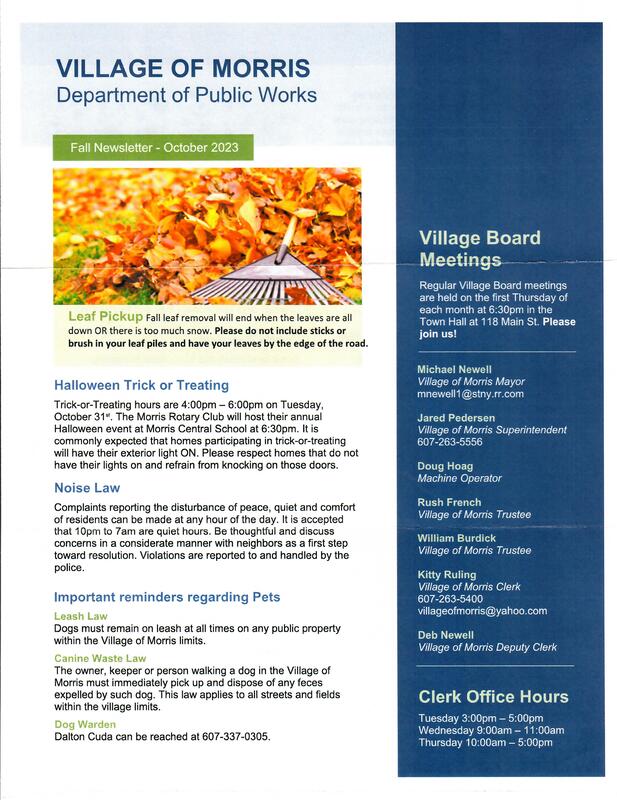
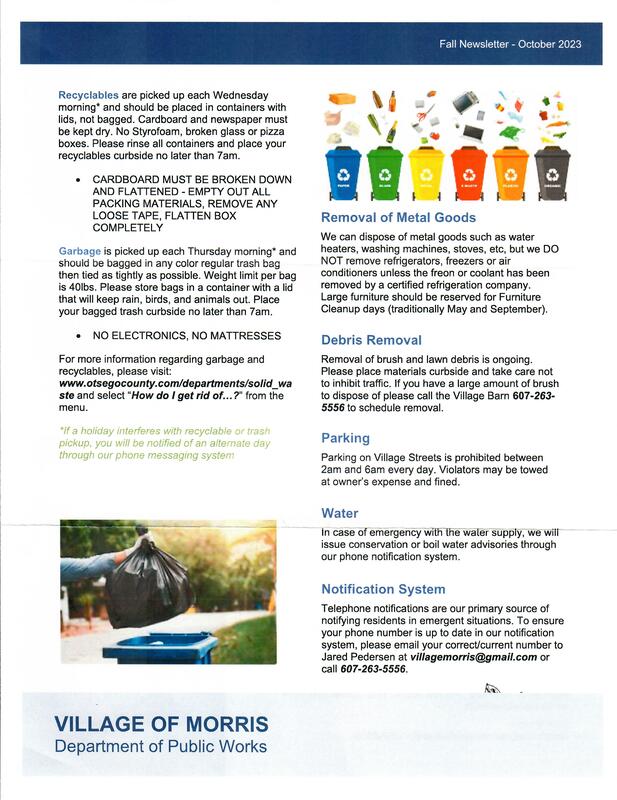
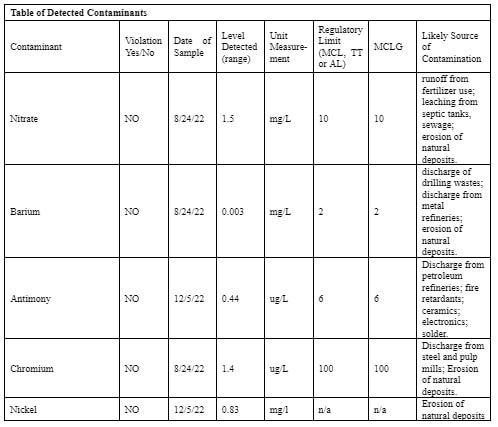
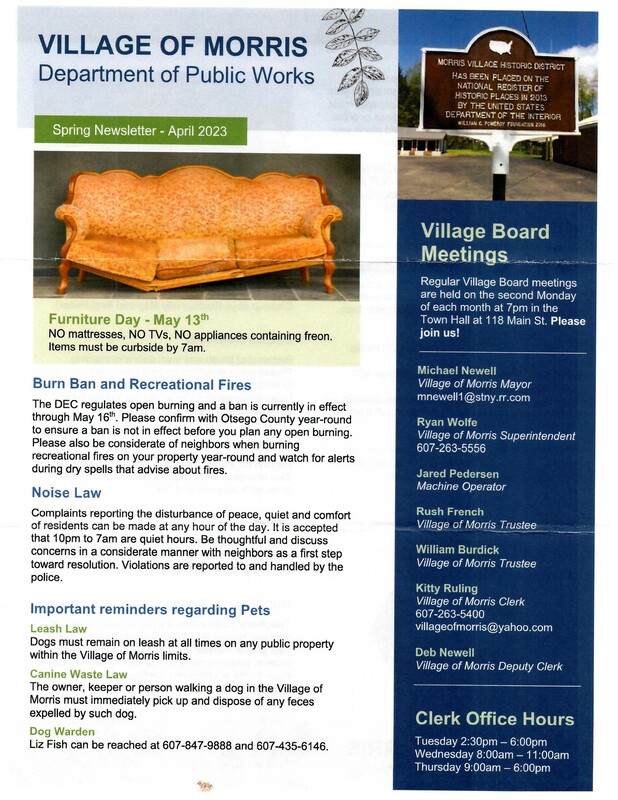
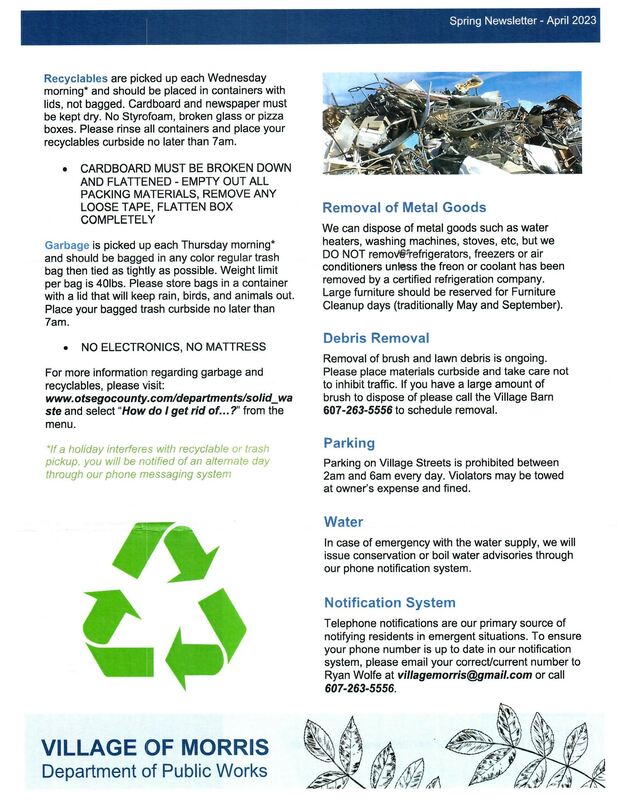
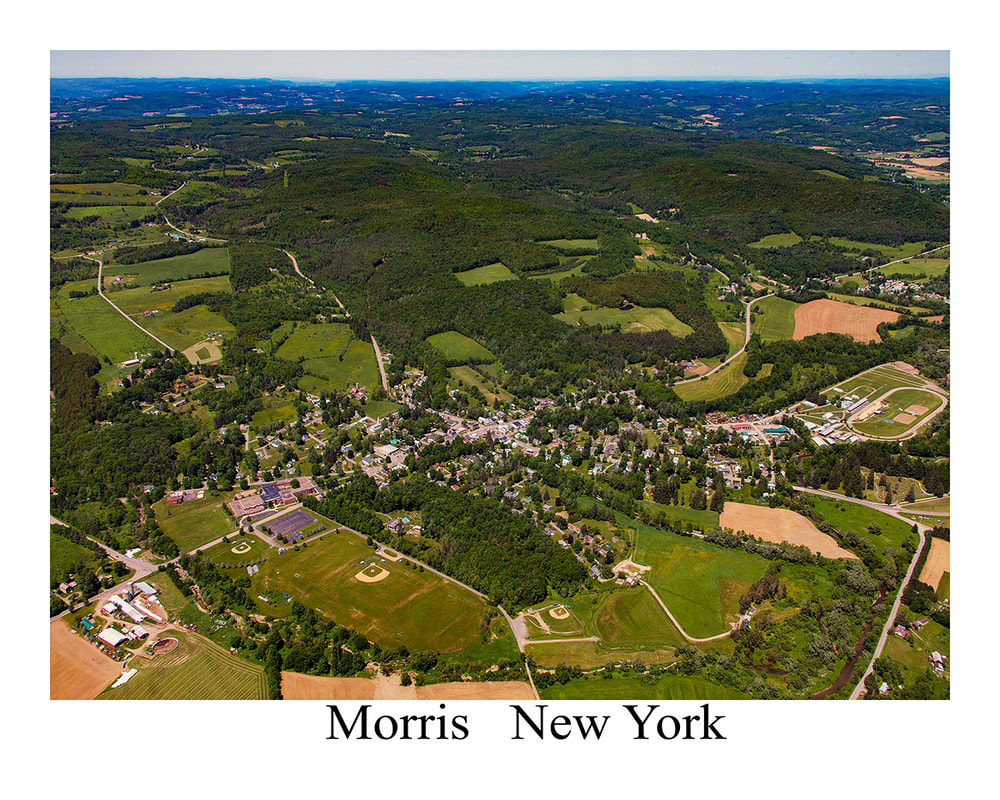
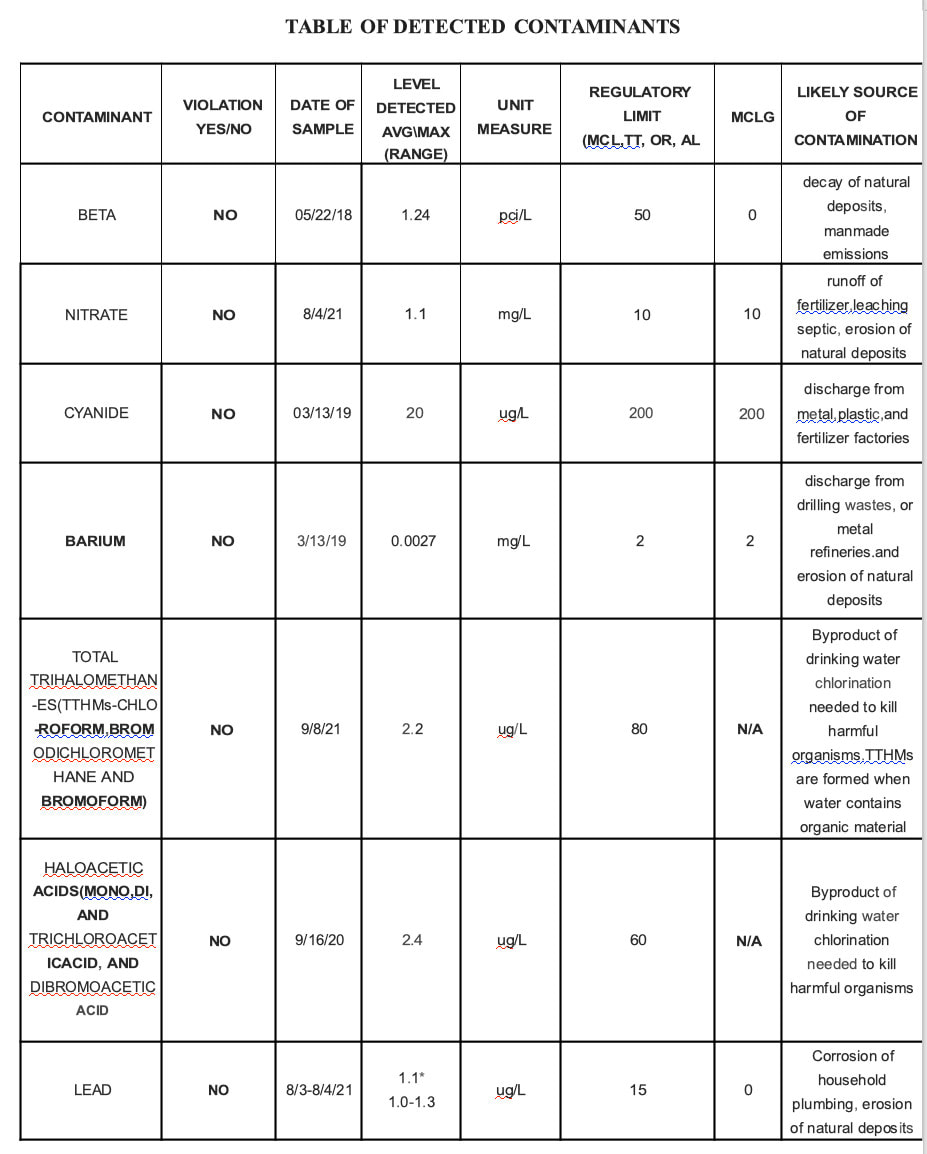
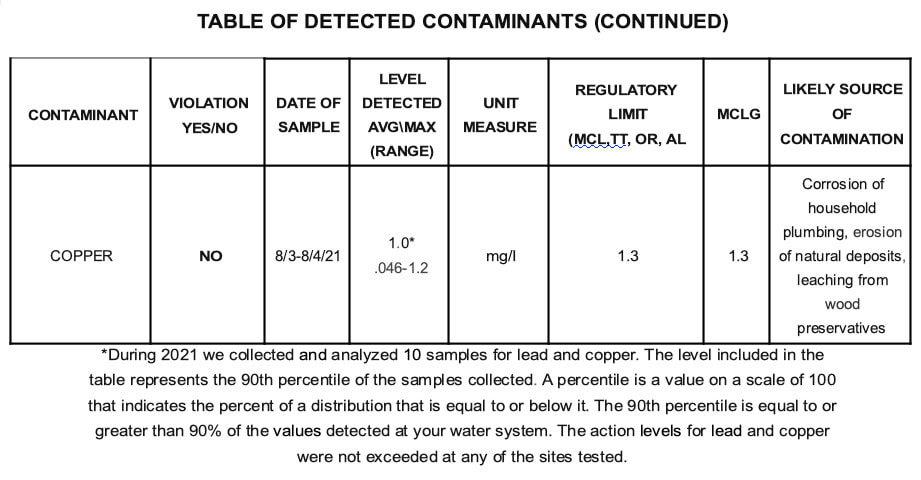
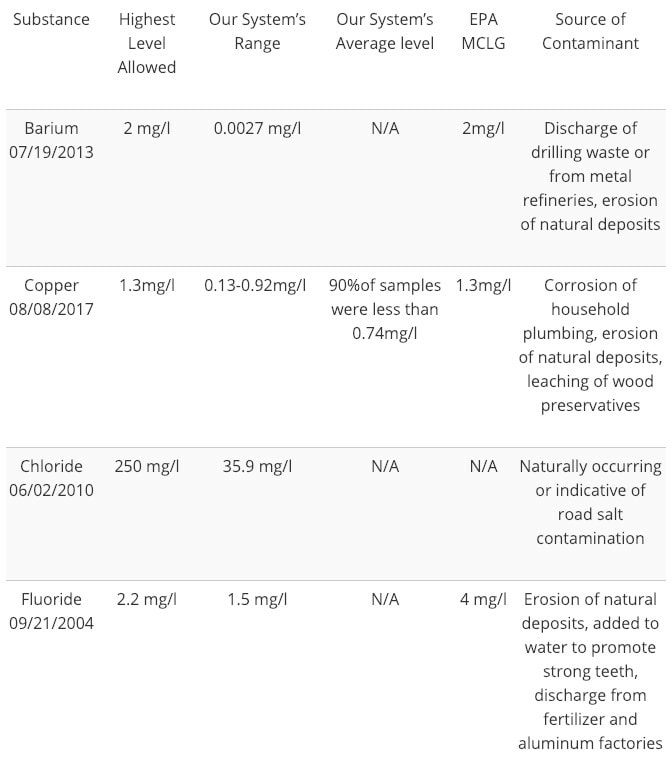
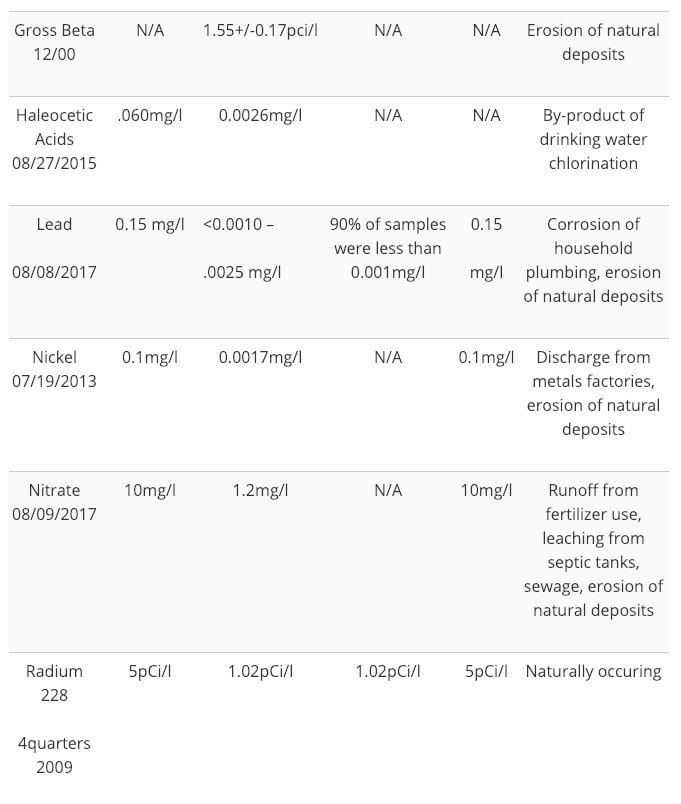
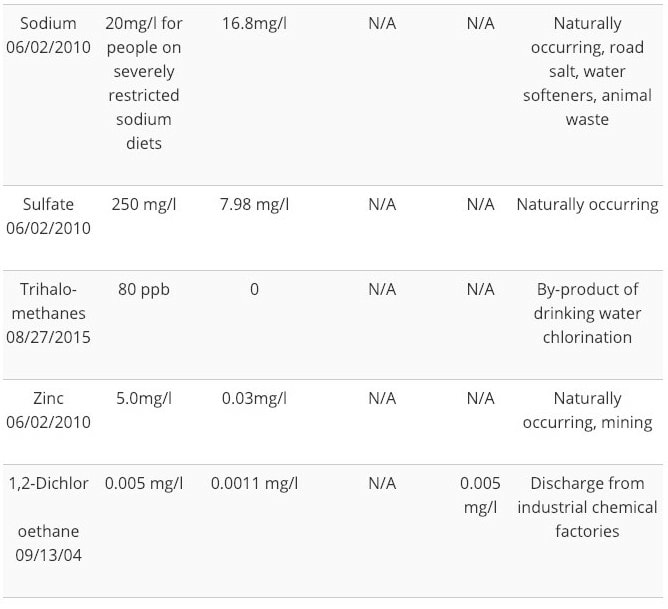
 RSS Feed
RSS Feed